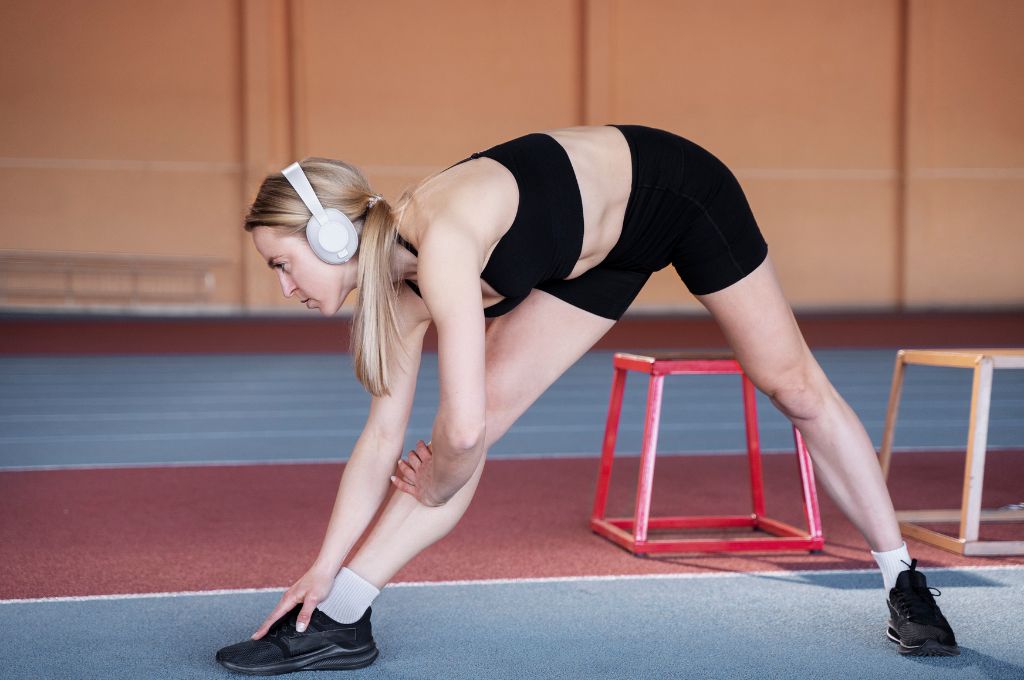Have you ever glanced at your calves and marveled at their muscularity, wondering why they’re so prominent compared to the rest of your body? This is a common question among fitness enthusiasts and casual observers alike. In this extensive guide, we delve deep into the physiology, genetics, and lifestyle factors contributing to your calves’ muscularity.
Genetic Foundations
Genetics plays a pivotal role in determining the composition of your muscles, including those in your calves. Some individuals are genetically predisposed to developing muscular calves more easily than others. This predisposition stems from variations in muscle fiber composition, with some people having a higher proportion of fast-twitch muscle fibers in their calves. These fast-twitch fibers have a greater capacity for hypertrophy, leading to more pronounced muscle growth. Additionally, the insertion points of tendons in the calves can vary, influencing muscle shape and size. Therefore, genetics could hold the key if you’ve ever wondered why your calves are so muscular.
Active Lifestyle
Regular physical activity can significantly impact the development of your calf muscles. Activities such as running, cycling, and hiking place substantial demands on the calf muscles, leading to hypertrophy over time. When you consistently challenge your calves with resistance and endurance exercises, they adapt by growing stronger and more defined. Furthermore, activities that involve explosive movements, such as sprinting and jumping, can stimulate fast-twitch muscle fibers in the calves, contributing to their muscular appearance. So, if you lead an active lifestyle, it’s no wonder your calves are so muscular.
Proper Nutrition
Nutrition plays a critical role in muscle development throughout the body, including the calves. Consuming an adequate amount of protein is essential for muscle repair and growth. Aim to include lean protein sources such as chicken, fish, tofu, and legumes to support calf muscle maintenance and development. Additionally, carbohydrates provide the energy needed to fuel intense workouts that target the calves, ensuring optimal performance and muscle growth. Be aware of healthy fats contributing to overall muscle health and function. By fueling your body with the right nutrients, you’re giving your calves the support they need to stay muscular and strong.
Resistance Training
Incorporating targeted resistance exercises into your fitness routine is key to building and maintaining muscular calves. Exercises such as calf raises, lunges and box jumps specifically target the calf muscles, promoting growth and definition. When performing these exercises, focus on proper form and gradually increase the intensity and resistance to continue challenging your calves. Additionally, varying your workout routine with different exercises and rep ranges can prevent plateaus and stimulate further muscle growth. Consistency is key, so make calf training a regular part of your fitness regimen to understand why your calves are so muscular.
Anatomical Considerations
The anatomy of the calf muscles also plays a significant role in their muscular appearance. The two primary muscles of the calf are the gastrocnemius and the soleus. The gastrocnemius, located on the back of the lower leg, is responsible for ankle plantar flexion and plays a prominent role in activities like walking, running, and jumping. It has two heads, giving it a distinct diamond shape when well-developed. The soleus lies beneath the gastrocnemius and is primarily engaged during activities that require sustained contraction, such as standing and walking. Understanding the anatomy of your calves can provide insights into why they are so muscular and how to train them effectively.
Hormonal Factors
Hormones, including the calves, are crucial in muscle growth and development throughout the body. Testosterone, in particular, is a hormone that significantly influences muscle mass and strength. Individuals with higher testosterone levels may find it easier to build and maintain muscular calves compared to those with lower levels. Growth hormone and insulin-like growth factor-1 (IGF-1) also play roles in muscle hypertrophy and repair. Hormonal imbalances or deficiencies can affect muscle development, so it’s essential to maintain overall hormonal health through proper nutrition, exercise, and lifestyle habits.
Age and Muscle Mass
As we age, changes occur in our bodies, affecting muscle mass and composition, including the calves. Hormonal fluctuations, decreased physical activity, and changes in nutrient absorption can all contribute to a gradual decline in muscle mass over time. However, individuals who have consistently engaged in resistance training and maintained a healthy lifestyle may experience less muscle loss with age. Additionally, older adults who continue challenging their calves through exercise can preserve and even increase muscle mass, defying the typical age-related decline. Age is a factor to consider when contemplating why your calves are so muscular and how to maintain their strength and definition over time.
Water Retention
Water retention can temporarily affect the appearance of your calves, making them appear more muscular than usual. This phenomenon, known as edema, occurs when excess fluid accumulates in the tissues, causing swelling and puffiness. Various factors, including prolonged sitting or standing, hormonal fluctuations, and dietary choices, can cause edema. While water retention itself doesn’t contribute to muscle growth, it can give the illusion of larger calves due to increased volume. If you notice fluctuations in the size of your calves due to water retention, focus on staying hydrated, maintaining a balanced diet, and incorporating movement into your daily routine to encourage fluid circulation and reduce swelling.
Psychological Factors
Believe it or not, psychological factors can also influence your calves’ perceived size and muscularity. Body image perceptions vary greatly among individuals, and factors such as self-esteem, social comparison, and media influence can shape how you view your body. Someone with a positive body image may perceive their muscular calves as a source of pride and confidence, while others may feel self-conscious or dissatisfied regardless of their calf size. It’s essential to cultivate a healthy mindset and focus on overall health and well-being rather than fixating on specific body parts. Embrace and appreciate your muscular calves for the strength and functionality they provide, regardless of societal beauty standards or personal insecurities.
Recovery and Rest
Muscle growth doesn’t happen solely during workouts; it occurs during periods of rest and recovery as well. Adequate rest is essential for allowing the muscles, including the calves, to repair and rebuild stronger after intense exercise. Without sufficient rest, overtraining can occur, leading to fatigue, decreased performance, and potential injury. Incorporate rest days into your workout routine and prioritize quality sleep to optimize recovery and muscle growth. Additionally, consider incorporating active recovery strategies such as stretching, foam rolling, and low-impact activities to promote circulation and alleviate muscle soreness. By prioritizing recovery, you can ensure that your calves have the opportunity to grow and maintain their muscular appearance over time.
The Myth of Spot Reduction
Many wonder if it’s possible to specifically target fat loss or muscle gain in particular body areas, such as the calves. However, spot reduction, or selectively losing fat from one area through targeted exercises, is largely a myth. Losing weight or gaining muscle tends to occur throughout the body rather than in isolated areas. Therefore, while targeted calf exercises can strengthen and define the muscles, they won’t necessarily lead to localized fat loss in that area. Instead, focus on overall fat loss through a combination of cardiovascular exercise, strength training, and a balanced diet to achieve a leaner physique and reveal the muscularity of your calves.
Hydration and Muscle Function
Proper hydration, including the calves, is crucial for optimal muscle function and performance. Dehydration can impair muscle contraction and endurance, decreasing workout performance and potentially hindering muscle growth. Ensure you drink enough water throughout the day, especially before, during, and after exercise, to maintain hydration levels and support calf muscle function. Electrolytes such as sodium, potassium, and magnesium also play essential roles in muscle contraction and hydration balance, so be mindful of replenishing electrolytes during prolonged or intense workouts. By prioritizing hydration, you can maximize the effectiveness of your calf workouts and maintain their muscular appearance.
Mind-Muscle Connection
Developing a strong mind-muscle connection is key to maximizing the effectiveness of your calf workouts and promoting muscle growth. Focusing your attention on the target muscles during exercises ensures that they’re properly engaged and stimulated. Please pay close attention to the sensations in your calves as you perform each repetition, and visualize them contracting and lengthening with each movement. Mindful movement enhances muscle activation and reduces the risk of injury by promoting proper form and alignment. Whether you’re performing calf raises, lunges, or jumps, cultivate a mindful approach to your workouts to unlock the full potential of your calf muscles and understand why they are so muscular.
Stretching and Flexibility

Maintaining adequate flexibility in the calf muscles is essential for preventing injury, improving performance, and promoting overall muscle health. Tight calf muscles can restrict movement and lead to imbalances, affecting your ability to engage them effectively during workouts. Incorporate dynamic and static stretches targeting the calves into your warm-up and cool-down routines to increase flexibility and range of motion. Stretching exercises such as calf stretches, toe touches, and ankle circles can help alleviate tension and tightness, allowing for better muscle activation and contraction during workouts. By prioritizing flexibility, you can enhance the effectiveness of your calf training and maintain their muscular appearance with greater ease.
Shoe Selection and Support
The shoes you wear during exercise can significantly impact your calves’ comfort, performance, and health. Ill-fitting or unsupportive shoes can lead to discomfort, pain, and even injury, affecting your ability to engage your calf muscles effectively. Choose athletic shoes that provide adequate cushioning, stability, and support for your specific activities and foot type. Consider factors such as arch support, heel drop, and toe box width when selecting shoes for running, weightlifting, or other forms of exercise. Additionally, worn-out shoes should be replaced regularly to maintain optimal support and prevent overuse injuries. Investing in proper footwear can enhance your calf workouts and minimize the risk of injury, ensuring that they remain muscular and strong.
Posture and Alignment
Proper posture and alignment are essential for optimizing calf muscle engagement during exercises and daily activities. Poor posture, such as slouching or rounding the shoulders, can affect the alignment of the spine and pelvis, leading to imbalances and decreased muscle activation in the calves. Focus on maintaining a neutral spine, squared shoulders, and engaged core during exercises that target the calves, such as calf raises and lunges. Additionally, be mindful of your foot positioning and weight distribution to ensure that you’re effectively targeting the desired muscle groups. Incorporating exercises that improve posture and alignment, such as planks and bridges, can also indirectly benefit the strength and appearance of your calves. By prioritizing proper posture and alignment, you can maximize the effectiveness of your calf workouts and understand why your calves are so muscular.
Psychological Benefits of Muscular Calves
In addition to the physical advantages of having muscular calves, psychological benefits come with their development. Muscular calves can enhance your overall physique, boost self-confidence, and elicit admiration from others. Strong and defined calves can be a source of pride and motivation, whether strutting your stuff at the beach or powering through a tough workout. Furthermore, the sense of accomplishment that comes from achieving muscular calves through hard work and dedication can translate to other areas of your life, instilling a sense of discipline and resilience. Embrace the psychological benefits of your muscular calves and let them symbolize your strength and determination.
Community and Support
Building muscular calves, like any fitness goal, can be challenging, but having a supportive community can make all the difference. Surround yourself with like-minded individuals who share your passion for health and fitness, whether through a local gym, online forums, or social media groups. Engage in discussions, share progress updates, and seek advice from others with calf training experience. A supportive community can provide encouragement, accountability, and valuable insights to help you stay motivated and committed to your fitness journey. Together, you can celebrate successes, overcome obstacles, and continue striving to understand why your calves are so muscular.
Injury Prevention Strategies
Preventing injuries is paramount when it comes to maintaining the muscularity and functionality of your calves. Incorporate injury prevention strategies into your workout routine to minimize the risk of strains, sprains, and other common calf injuries. Start each workout with a thorough warm-up to increase blood flow and prepare your muscles for exercise. Gradually increase the intensity and duration of your workouts to avoid overloading your calves too quickly. Pay attention to any discomfort or pain during exercise and adjust your technique or workload accordingly. Listen to your body and allow for adequate rest and recovery between workouts to prevent overuse injuries. By prioritizing injury prevention, you can safeguard the health and strength of your calves and continue to understand why they are so muscular.
Setting Realistic Expectations
Building muscular calves, like any fitness goal, takes time, patience, and consistency. It’s essential to set realistic expectations and understand that significant changes will take time to happen. Progress may be gradual, and there may be setbacks, but stay focused on the bigger picture and celebrate every milestone achieved. Remember that everyone’s genetic makeup and individual circumstances are different, so comparisons to others are only sometimes useful or productive. Instead, focus on your progress and celebrate the unique qualities of your calves, regardless of their size or shape. By setting realistic expectations and staying committed to your fitness journey, you can continue to unravel why your calves are so muscular and achieve your desired results over time.
Periodization and Progression
Periodization is a strategic approach to training that involves systematically varying the intensity, volume, and frequency of workouts over time to optimize performance and results. Incorporating periodization principles into your calf training can help prevent plateaus, promote muscle growth, and reduce the risk of overtraining. Periodization typically involves dividing your training program into specific phases, such as hypertrophy, strength, and power, each focusing on different aspects of muscle development. Within each phase, progressively increase the difficulty and challenge of your workouts to continue stimulating muscle growth and adaptation. By implementing periodization strategies, you can ensure that your calf training remains effective and sustainable, unlocking the full potential of your muscles and understanding why they are so muscular.
Tracking Progress and Adjustments
Monitoring your progress is essential for understanding what’s working well and where adjustments may be needed in your calf training regimen. Keep track of key metrics such as strength gains, muscle measurements, and workout performance to gauge your progress over time. Consider taking regular photos or measurements of your calves to track changes in size and definition visually. Additionally, pay attention to how your calves feel during workouts and daily activities, noting any areas of weakness or imbalance. Based on your progress and feedback, adjust your training program, such as modifying exercises, increasing or decreasing intensity, or adjusting rest periods. By staying proactive and attentive to your progress, you can optimize your calf training and continue to unlock the mystery of why your calves are so muscular.
Celebrating Achievements
Along your fitness journey, it’s essential to celebrate your achievements and milestones, no matter how big or small. Whether you’ve reached a new personal best in calf raises, noticed increased definition in your calves, or simply remained consistent with your training, acknowledge and celebrate your successes. Celebrating achievements boosts morale, reinforces positive habits, and provides motivation to continue progressing towards your goals. Share your victories with friends, family, or your fitness community to inspire others and bask in the satisfaction of your hard-earned accomplishments. By celebrating achievements along the way, you can stay motivated and focused on unraveling why your calves are so muscular.
Seeking Professional Guidance
If you need help understanding why your calves are so muscular or how to train them effectively, feel free to seek guidance from a qualified fitness professional. Personal trainers, physical therapists, and sports nutritionists can provide personalized advice, support, and expertise to help you achieve your calf training goals. They can assess your individual needs, create customized workout programs, and offer valuable insights and feedback to optimize your training and results. Additionally, they can address any concerns or challenges, providing motivation and accountability to keep you on track. Investing in professional guidance can accelerate your progress, prevent injury, and ensure you’re making the most of your efforts to understand why your calves are so muscular.
Conclusion
The muscularity of your calves is influenced by a combination of factors, including genetics, lifestyle, training, and anatomy. By understanding these factors and implementing targeted strategies, you can unlock the mystery of why your calves are so muscular and achieve your desired results. Whether you’re genetically predisposed to muscular calves or have diligently trained them over time, embrace and celebrate the unique qualities of your calves as a testament to your hard work, dedication, and resilience. Keep exploring, experimenting, and pushing your limits to unravel why your calves are so muscular.




